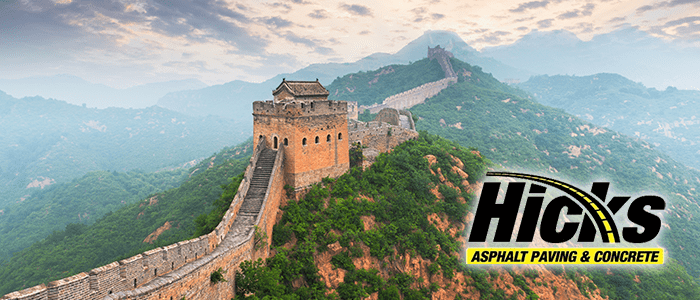Most of us know that China is much bigger than the U.S. and has around four times more people. They have more buildings, roads, and tunnels than most countries. China pours 60 percent of the world’s concrete. The country’s concrete production surpassed the United States production for the entire 20th century in 2011-2013.
The Concrete Empire
Since the 1950’s, all 31 provinces in China have developed their own cement enterprises. The individual enterprises help to decrease transportation and distribution costs, and keep profits local. Cement production exploded in the 1970’s to fuel the country’s urbanization, and continued to expand even as urban construction started to slow in the past few years.
“Ever since the 2008 global financial crisis, the Chinese government has used investment in infrastructure, real estate, and industrial capacity as a way to stimulate the economy,” Greenpeace’s Lauri Myllyvirta states in an interview, “That’s what is behind the mind-blowing amount of cement the country uses.”
Even as the national government raises concerns over cement overcapacity, local governments, especially in China’s Rust Belt—fear social unrest and political risks of job losses in the cement sector and often find loopholes to continue subsidizing the industry.
Challenges
Becoming more efficient remains a challenge. Small firms struggle to comply with new regulations, due to the high costs of retrofitting and long returns on investment. A chinadialogue report highlighted one solution: namely, that local governments could push Chinese cement enterprises to merge and reduce the financial burden of these upgrades.
Lawrence Berkeley National Laboratory is investigating electrifying cement kilns to reduce cement’s immense carbon footprint. WWF-China has pushed energy-efficiency measures and alternate fuels. They suggested alternatives such as waste straw, used car tires, and municipal waste for cement kilns.
While these fuels are potentially cleaner alternatives, Anders Hove of said in an interview that “the high operating costs for creating collection and delivery supply chains of these alternative fuels can be difficult and costly, requiring cooperation between government agencies that regulate waste and the industries.”
The Chinese government’s heavy investments in carbon capture, utilization, and storage could be used for cement and other heavy industries. Similarly, the upcoming national carbon emissions trading program could help to create financial incentives to push the most inefficient cement plants to finally close.
Concrete Projects
In the suburbs south of Beijing, what could one day be the world’s busiest airport is rapidly taking shape. Nicknamed “the starfish” due to the striking design by Zaha Hadid Architects, the Beijing Daxing international airport is set to open in October, and could eventually handle more than 100 million passengers a year.
While the 52,000-tonne steel exoskeleton covering the airport’s six concourses immediately catches the eye, what lies beneath is familiar to many Chinese mega-projects: concrete – 1.6m cubic meters or 5.2 million feet of it. Construction of the new airport hub started in 2014. The effort is one of the largest infrastructure projects from the country’s president, Xi Jinping. President Xi made the project in an effort to jumpstart China’s slowing economy and place Beijing on the international stage.
China & Concrete Mania
China’s concrete mania shows little sign of abating. New high-rise apartments go up along the cities’ edges almost weekly to accommodate the steady stream of immigrants. Headline projects, such as the new Beijing airport or the Hong Kong bridge, are prestigious achievements.
On a more humble scale, Shanghai unveiled the world’s longest 3D-printed concrete bridge earlier this year. It is a feat of engineering, constructed from 176 individual 3D printed concrete units. As Xu Weiguo, the architect, says: “It’s very easy to get and widely used in construction projects”. After all, he adds, “concrete is the cheapest construction material in China”.





